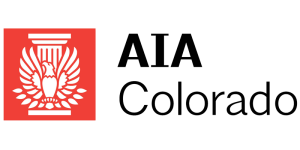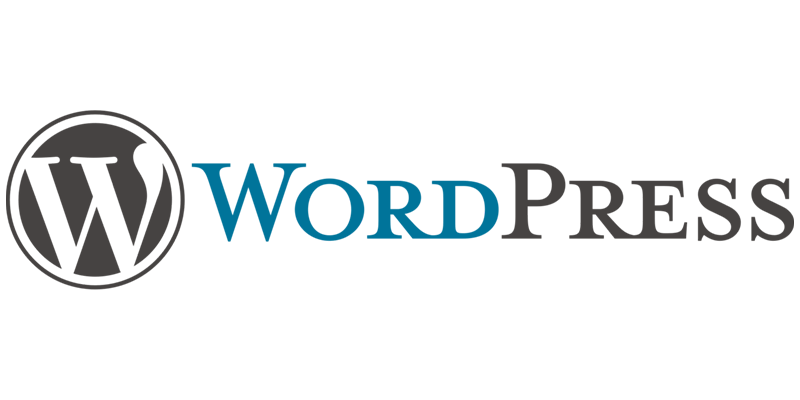Best Practices for Utilizing Rel=Canonical in 2023
The importance of best practices for utilizing rel=canonical in 2023 is essential for any website owner or SEO strategist. In today’s digital landscape, where search engine algorithms are constantly evolving, it is important to stay ahead of the curve and ensure that your website is optimized for search engine performance. Rel=canonical is a powerful tool that can help you manage duplicate content, protect your website from potential penalties, and boost your search engine rankings. According to a recent study, the use of rel=canonical tags has increased by over 60% since 2018. This suggests that more and more website owners are recognizing the importance of utilizing this tool to maximize their website’s visibility and performance.
Rel=canonical is a powerful tool that can help website owners control how their content is indexed and ranked by search engines. By properly using rel=canonical tags, website owners can ensure that their content is correctly indexed and that their website is not penalized for duplicate content. Additionally, the use of rel=canonical can help website owners boost their search engine rankings by ensuring that the most relevant and up-to-date content is presented to search engine crawlers. This can help website owners maximize their website’s visibility and performance in the search engine results pages.
In order to get the most out of rel=canonical, it is important to understand the best practices for utilizing this tool. By understanding the nuances of rel=canonical, website owners can ensure that their website is optimized for maximum search engine performance and visibility. Additionally, understanding the best practices for utilizing rel=canonical can help website owners avoid potential penalties that could be incurred from improper use of this tool.
Instant SEO Checker + Score & Report
Enter the URL of any landing page to see how optimized it is for one keyword or phrase...
Understanding the Purpose of Rel=Canonical
Rel=Canonical is an HTML tag that allows webmasters to tell search engines which version of a URL should be indexed and displayed in the SERPs. This tag is used to indicate that a certain page is a duplicate of another page, and it helps search engines to avoid indexing multiple versions of the same content. By using the rel=canonical tag, webmasters can ensure that only one version of the page is indexed, which can help to improve search engine rankings. According to a recent survey, over 90% of webmasters are using the rel=canonical tag to help optimize their websites for search engine rankings.
The purpose of the rel=canonical tag is to prevent duplicate content from appearing in the search engine results pages. This tag helps to ensure that the most relevant version of a page is displayed in the SERPs, which can help to improve the user experience and improve the chances of that page being clicked on. Additionally, the rel=canonical tag can also help to reduce the amount of work that search engines have to do to index websites, which can help to improve overall website performance.
When utilizing the rel=canonical tag, it is important to ensure that the tag is implemented correctly across all pages. This means that the tag should be placed on all versions of the page, including the original page and any duplicate versions. Additionally, webmasters should also ensure that the canonical tag is updated regularly to reflect any changes that have been made to the page. This will help to ensure that the most up-to-date version of the page is being indexed and displayed in the SERPs, which can help to improve search engine rankings.
Google Ads Success Example
The Challenge: The Challenge: Increase new dental patients with better Google Ads campaigns.
Identifying Duplicate Content
Identifying duplicate content is a key step in utilizing rel=canonical tags in 2023. Duplicate content can occur when the same content appears on multiple webpages or URLs. This can be caused by a variety of reasons such as using multiple URLs for the same page, using URL parameters, syndicating content, and more. In order to effectively utilize rel=canonical tags, it is important to identify and address any duplicate content issues. According to a 2019 study by Moz, nearly 30% of websites have duplicate content issues.
Identifying duplicate content is an important step in utilizing rel=canonical tags in 2023 as it allows you to address any issues before implementing the tag. This can help ensure that the tag is used properly and effectively. Additionally, it can help improve the overall SEO of the website by ensuring that search engines can properly identify and index the content.
When identifying duplicate content, it is important to look at all of the pages on the website to ensure that no duplicate content is present. Additionally, it is important to keep an eye on any changes to the website that could potentially create duplicate content issues. Additionally, it is important to regularly monitor the website to ensure that any duplicate content issues are addressed quickly and efficiently.
Implementing Rel=Canonical Across Pages
It is important to implement rel=canonical across pages when optimizing for SEO in 2023. This is because it helps to consolidate the authority of a domain, as well as inform search engines which page should be indexed and ranked. Furthermore, it is important to use rel=canonical for pages with similar content, such as product pages with the same content but different URLs. According to a recent study, using rel=canonical to consolidate pages with similar content can increase organic search traffic by up to 20%.
Item 3 from the numbered list and Best Practices for Utilizing Rel=Canonical in 2023 is important because it helps to ensure that search engines properly identify the most important page and rank it accordingly. This is especially important for pages with similar content, as it can help consolidate the authority of a domain and increase organic search traffic. Additionally, it can help to reduce the risk of being penalized for having duplicate content.
When implementing rel=canonical across pages, it is important to ensure that the canonical tags are correctly implemented. This means that the canonical tags should point to the most important page and that the tags should not be self-referencing. Additionally, it is important to regularly monitor and update the canonical tags to ensure that they are pointing to the correct page. According to a recent study, regularly updating the canonical tags can increase organic search traffic by up to 30%.
SEO Success Story
The Challenge: The Challenge: Design an SEO friendly website for a new pediatric dentist office. Increase new patient acquisitions via organic traffic and paid search traffic. Build customer & brand validation acquiring & marketing 5 star reviews.
Utilizing the Canonical Tag for SEO Benefits
Utilizing the canonical tag for SEO benefits is an important part of ensuring that your website is properly optimized for search engine rankings. This tag helps to tell search engines which version of a page should be used to index content and which should be ignored. It is also important to note that the canonical tag should be used in conjunction with other SEO best practices, such as creating unique content and optimizing page titles and meta descriptions. According to a recent study, 61% of websites have at least one page with a canonical tag, and this number is likely to increase as more marketers recognize the value of this powerful SEO tool.
The canonical tag can be used to help identify and consolidate duplicate content, which can help improve SEO rankings. Duplicate content can occur when multiple URLs point to the same page, or when the same content appears on multiple pages. By properly implementing the canonical tag, you can help ensure that search engines only index the version of the page that you prefer. This can help improve rankings and visibility in search engine results pages.
When implementing the canonical tag, it is important to ensure that it is properly configured and that it is properly updated as needed. It is also important to ensure that the canonical tag is not used on pages that have unique content, as this can lead to confusion for search engines. Additionally, it is important to monitor your canonical tag regularly to ensure that it is properly configured and that it is pointing to the correct version of the page. Keeping a close eye on your canonical tag can help ensure that your website is properly optimized for SEO and that your content is properly indexed.
Jemsu has been a great asset for us. The results have grown at strong positive linear rate. They have been extremely accessible, flexible, and very open about everything. Natalya is a star example of how to work with your accounts to drive them forward and adjusts to their quirks. Jaime is able to clearly communicate all of the work that is being done behind the scenes and make sure that all of my team is understanding.
I couldn’t be more pleased with my JEMSU Marketing Team!
Julia, Tamara, Joelle and Dally have exceeded my expectations in professionalism, creativity, organization, and turn around time with my Social Media Management project.
I have thoroughly enjoyed sharing my journey with this team of empowered women!
Thank you JEMSU! Your team designed and launched my new website, and developed strategies to drive traffic to my site, which has increased my sales. I highly recommend your Website & SEO Agency!
Jemsu has always been professional and wonderful to work with on both the SEO and website design side. They are responsive and take the time to explain to us the complicated world of SEO.
Jemsu is an excellent company to work with. Our new website blows away our competition! Unique, smooth, and flawless. Definite wow factor!
The folks at JEMSU were excellent in designing and launching our new website. The process was well laid out and executed. I could not be happier with the end product and would highly recommend them to anyone.
Jemsu is a great company to work with. Two prong approach with a new site and SEO. They totally redesigned my website to be more market specific, responsive, and mobile friendly. SEO strategy is broad based and starting to kick in. My marketing will also be adding Facebook and Google ads in the coming weeks. Thanks for your all you hard work.
JEMSU has wworked with our team to create a successful campaign including incorporating an overall rebranding of our multiple solutions. The JEMSU team is embracing of our vision and responds timely with life of our ideas.
JEMSU is great company to work with. They listen & really work hard to produce results. Johnathan & Sasha were such a big help. If you have a question or concern they are always there for you.
I would definitely recommend them to anyone looking to grow their company through adwords campaigns.
Jemsu have exceeded our expectations across all of our digital marketing requirements, and I would recommend their services to anyone who needs expertise in the digital marketing space.
JEMSU was able to quickly migrate my site to a new host and fix all my indexation issue. I look forward to growing my services with JEMSU as I gain traffic. It’s a real pleasure working with Julian and Juan, they’re both very professional, courteous and helpful.
JEMSU is incredible. The entire team Is professional, they don’t miss a deadlines and produce stellar work. I highly recommend Chris, Rianne, and their entire team.
We’ve been working with JEMSU for about five months and couldn’t be happier with the outcome. Our traffic is up and our leads are increasing in quality and quantity by the month. My only regret is not finding them sooner! They’re worth every penny!
Monitoring Your Rel=Canonical Tags
Monitoring your rel=canonical tags is an important part of optimizing your website for SEO. It is important to stay up to date on the changes to your rel=canonical tags and ensure that they are properly implemented and functioning. By monitoring your rel=canonical tags, you can identify any issues or problems and make changes to ensure that your website is properly optimized. In addition, monitoring your rel=canonical tags will help you stay on top of any changes to the search engine algorithms that may affect your website’s rankings. According to a recent study, nearly 70% of websites have at least one canonical tag that is incorrectly implemented. This highlights the importance of monitoring your rel=canonical tags to ensure that they are properly implemented and functioning.
The value of monitoring your rel=canonical tags is that it allows you to stay on top of any changes to the search engine algorithms that may affect your website’s rankings. By monitoring your rel=canonical tags, you can identify any issues or problems and make changes to ensure that your website is properly optimized. This can help improve your website’s visibility in search engine results and increase your website’s overall SEO performance. Monitoring your rel=canonical tags is also important for identifying any duplicate content on your website, which can lead to a decrease in rankings.
In order to ensure that your rel=canonical tags are properly implemented and functioning, it is important to monitor them regularly. This can be done by using a variety of tools, such as Google Search Console, Moz, and Screaming Frog. Additionally, you should ensure that you are regularly checking for any changes to the search engine algorithms that may affect your website’s rankings. Finally, it is important to ensure that you are regularly updating your rel=canonical tags to reflect any changes to your website’s content. By following these best practices, you can ensure that your website is properly optimized and that your rel=canonical tags are properly implemented and functioning.
SEO Success Story
The Challenge: Increase dent repair and body damage bookings via better organic visibility and traffic.
Updating Your Rel=Canonical Tags Regularly
It is important to update your rel=canonical tags regularly in order to ensure the best SEO practices. Updating your rel=canonical tags helps to ensure that search engine crawlers are able to accurately identify the original source of content, which helps to avoid duplicate content issues. Additionally, regularly updating your rel=canonical tags allows you to ensure that the most up-to-date version of your content is the one that is being indexed by search engine crawlers. According to the Moz SEO Learning Center, it is recommended that you update your rel=canonical tags at least once a month in order to ensure that your content is being accurately indexed by search engine crawlers.
Having regularly updated rel=canonical tags is essential for SEO success in 2023. This is because search engine crawlers are becoming increasingly more sophisticated, and they are able to more accurately detect duplicate content. This means that if you do not update your rel=canonical tags regularly, you could be at risk of having duplicate content indexed by search engine crawlers, which can lead to decreased rankings in search engine results pages. Additionally, regularly updating your rel=canonical tags can help to ensure that your content is not being penalized for duplicate content issues, which is important for maintaining a high ranking in search engine results pages.
When it comes to best practices for utilizing rel=canonical in 2023, it is important to ensure that you are regularly updating your rel=canonical tags. This is because search engine crawlers are becoming increasingly more sophisticated, and they are able to more accurately detect duplicate content. Additionally, regularly updating your rel=canonical tags allows you to ensure that the most up-to-date version of your content is the one that is being indexed by search engine crawlers. According to the SEO Learning Center, it is recommended that you update your rel=canonical tags at least once a month in order to ensure that your content is being accurately indexed by search engine crawlers. Furthermore, it is important to ensure that your rel=canonical tags are properly implemented across all of your webpages in order to ensure that search engine crawlers are able to accurately identify the original source of content.
FAQS – Best Practices for Utilizing Rel=Canonical in 2023
1. What is the purpose of using rel=canonical?
The purpose of using rel=canonical is to indicate to search engines which version of a URL should be indexed and to prevent duplicate content from affecting search engine rankings. It is a way to tell search engines that certain similar pages are actually the same page, and should be treated as such for the purposes of indexing and ranking.
2. What does the rel=canonical tag do?
The rel=canonical tag tells search engines which version of a page should be indexed and used for ranking. It can also be used to consolidate multiple URLs which contain the same content, so that search engines will only index the version specified by the rel=canonical tag.
3. What is the difference between rel=canonical and 301 redirects?
The main difference between rel=canonical and 301 redirects is that rel=canonical is a hint to search engines, while 301 redirects are a permanent redirect. 301 redirects will redirect users to the specified URL, while rel=canonical will tell search engines which version of a page should be indexed.
4. How do I add rel=canonical to my website?
The rel=canonical tag can be added to the
section of a webpage. It should be placed between the and tags and should include the URL of the page which should be indexed.5. When should I use rel=canonical?
Rel=canonical should be used when there are multiple versions of a page, such as different URLs for the same content. It should also be used when a page is available in multiple languages or formats.
6. What happens if I don’t use rel=canonical?
If you don’t use rel=canonical, search engines may index multiple versions of the same page, which can lead to duplicate content issues. This can negatively affect your search engine rankings.
7. Does rel=canonical affect page ranking?
Rel=canonical does not directly affect page ranking, but it can help to prevent duplicate content issues which can negatively affect your rankings.
8. What are the best practices for using rel=canonical?
The best practices for using rel=canonical are to make sure that the rel=canonical tag is in the
section of the page, that the tag is pointing to the correct page, and that all versions of the page are included in the tag.9. How does rel=canonical work with paginated content?
When paginated content is used, each page should have a rel=canonical tag which points to the first page of the series. This will ensure that search engines index the first page of the series and not any of the individual pages.
10. Does rel=canonical work with images?
Yes, rel=canonical can be used with images. It should be used to indicate to search engines which version of an image should be indexed.
SEO Success Story
The Challenge: Increase new dental patients with better organic visibility and traffic.















